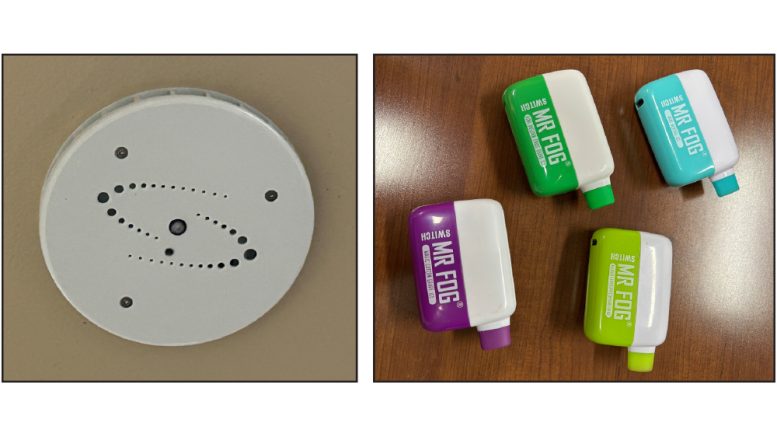The Hamilton County Council on Alcohol and Other Drugs (HCCOAOD) is partnering with Hamilton County middle and high schools to prevent vaping. HCCOAOD has granted $27,000 in funding for five schools to help them install 25 vape detectors.

Greer
“E-cigarettes are the most used tobacco product among youth,” said Monica Greer, executive director of HCCOAOD. Electronic cigarettes are battery-operated devices that heat a liquid to produce an aerosol that users inhale. Use of these devices is often referred to as vaping.
“Unfortunately,” Greer continued, “most e-cigarettes contain nicotine and flavorings which are highly addictive and can harm the developing adolescent brain. We believe the installation of vape detectors may help slow the use of vapes and provide a learning opportunity for the students using them.”
The vape detectors are placed in school restrooms and work much like smoke detectors. The detectors can differentiate between vaping, THC, or tetrahydrocannabinol, the chemical responsible for most of marijuana’s psychological effects, and aerosols, like deodorant or cologne, students use to mask the smell of marijuana and scented vapes. When a detector picks up on a vapor it sends a text to school administrators identifying which bathroom its located in.
If a student is caught vaping or with a vaping device, each school system has a policy as to how they will address it. Most schools offer intervention classes on site. If a student is assessed and the results indicate treatment is needed, the staff will make a referral to a treatment agency. If the vaping device included THC or another illegal substance, the police are alerted, and the school follows its policies on possession of illegal substances.
This year, HCCOAOD, the Hamilton County Health Department, and Breathe Easy Hamilton County have developed a vape-free task force that meets with school leaders quarterly to strategize and share ideas. Treatment providers are also included in these meetings to help develop protocols and intervention ideas.
“It’s a bigger problem than anyone thinks,” said one high school administrator. “Our detectors go off anywhere from five to 15 times a day. Middle school students are coming to us already addicted to vaping – kids in band, theater, sports – you name it. Every time we think we’re catching up with it, it takes off again.”
The increase in vaping among youth is rising at such an alarming rate that the U.S. Surgeon General now calls it an epidemic.
“Scientists are still learning about the long-term health effects of e-cigarettes,” Greer added. “In the meantime, we’re happy to support Hamilton County schools in their efforts to limit the use of e-cigarettes in an effort to prevent a lifelong addiction to tobacco and other drugs.”

